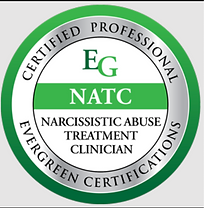
What is Trauma Processing
Processing trauma is a defence mechanism that only a few people grasp fully. Since it is critical for healing, you need to learn trauma processing to overcome the drawbacks of detoxing from a toxic relationship.
Processing entails: -
Experiencing- Recognize that an undesirable incident occurred.
Accepting-Avoid rationalizing or changing the reality to suit a narrative you have been conditioned to.
Validating- Explore your feelings, thoughts, and opinions in an honest way.
Learning from it-Understand the impact of the occurrence, live with it, and use the experience as a lesson.
Letting go-After learning, do not hold onto the past or let the experience define you, focus on the future and continue being yourself.
Exercise
What did I experience?
What is the impact of the experience, and what does it depict about me?
What are my feelings and opinions about it?
What is the action plan?
For instance, let us analyze the circumstances where you engaged in a behavior that you feel is inappropriate. The first consideration is to deduct the meaning of your action:
Why did you do it?
What were your feelings at that point that triggered the reaction?
Were you sad, frustrated, or happy?
Understanding your triggers and the impact of your actions holds the key to fully processing what happened.
For instance, when you find out that you were triggered by frustration since you felt that you were being ignored, you first need to be honest with yourself and show remorse as your actions were inappropriate.
Secondly, identify the root cause of your behaviour by exploring your past using the shadow hunting method, which traces the pattern of your behaviour to its origin. Once you diagnose your wound, you should work towards healing by confronting your past and making a conscious decision not to allow your past traumas to define you. To ensure that you process your triggers correctly, you need to be honest with yourself and avoid justifying, editorializing, or excusing behaviour that you know is out of your character.
Processing also empowers you to act and assume responsibility for yourself. You will have completed the processing processes effectively when you act in your best self-interest. It would help if you also prioritized being kind and forgiving with yourself to avoid plunging bank into wallowing in your trauma. For starters, you can write a forgiveness letter to yourself. Ensure to incorporate in your letter key details such as: -
The choices you made.
The self-betrayal that you tolerated and perpetuated by condoning an abusive or toxic relationship.
Assurance to yourself that the same mistake won’t recur.
This letter will enable you to think more clearly and objectively to complete the processing activity. After addressing the letter to yourself and forgiving yourself, you can also write a letter to the person who abused you. This will enable you to let go of the pain to start healing. If the person is narcissistic and vindictive, you can avoid mailing the letter to their address and burn or shred it.
A letter to yourself and others will free your thoughts, feelings, and opinion from pondering about the past and people who wronged you. Consequently, you will be able to start your new life on a clean slate with your mind, body, and spirit as the only things at the center of your life.


